PlayStation VR
Update: It's an all-out price war between the top VR headsets. The PlayStation VR price is at its cheapest ever, a drop that happened shortly after the HTC Vive price was brought to a historic low.
With all the price cuts, we thought it best to give you a complete breakdown of how the top three VR headsets compare when it comes to price, so you know exactly what you need to pay to get into virtual reality.
Here's a quick teaser: PlayStation VR continues to be the most affordable VR headset, though you compromise the specs of a PC-powered rig for one run from a console.
Still, some of the PlayStation VR bundles are quite tempting, and you only have to pay for a PS4 or PS4 Pro to run your headset, not a pricey VR-ready PC.
And once you've got your PlayStation VR setup, you have a growing library of PlayStation VR games to play. We recently updated our list of the best PlayStation VR games, so be sure to check it out!
Original article continues below...
PlayStation VR brings the world of virtual reality to consoles in a big way, and it does so without the cost most often associated with rival higher-end VR headsets.
Those headsets have not only traditionally been expensive devices on their own, but have also required expensive gaming PCs with enough power to run them.
Well over a year after its release, the PlayStation VR virtual reality headset is still going strong. Sony is positively committing to its VR development teams, as evidenced by the quality PlayStation VR games that have been released, and those yet to come.
Moss just launched in February, and two more must-play titles – The Inpatient and Sprint Vector – are also out now. What's more, Sony announced more than 30 games coming to PlayStation VR in spring 2018, or sometime between late March and mid-June. We expect to get a big preview of these games at E3 2018.
To cap it all off, a revised headset was also released in late 2017 to address the original headset's lack of HDR-passthrough. The future's bright for Sony's VR gear.
Let's put it this way: the PlayStation VR is different. While Oculus Rift has closed in on cost, the PSVR only requires a PS4 console to run, not an expensive PC set-up.
Frankly, it's remarkable that such an affordable solution is as capable as it is.
It has its problems, but by and large PlayStation VR proves that not only is console VR viable, it's actually enjoyable, too.
We've now tried dozens of games on the console, from Rocksteady's impressive (but short) Batman: Arkham VR to the laugh-out-loud funny Job Simulator to the tear-jerking Wayward Sky and even gun-peripheral-toting horror game Farpoint VR.
Some of these titles were more fun than others, obviously, but all of them made the same point: PlayStation VR doesn't suck.
Before we go on talking about PlayStation VR's finer points (and foibles), let's get the basics out of the way.
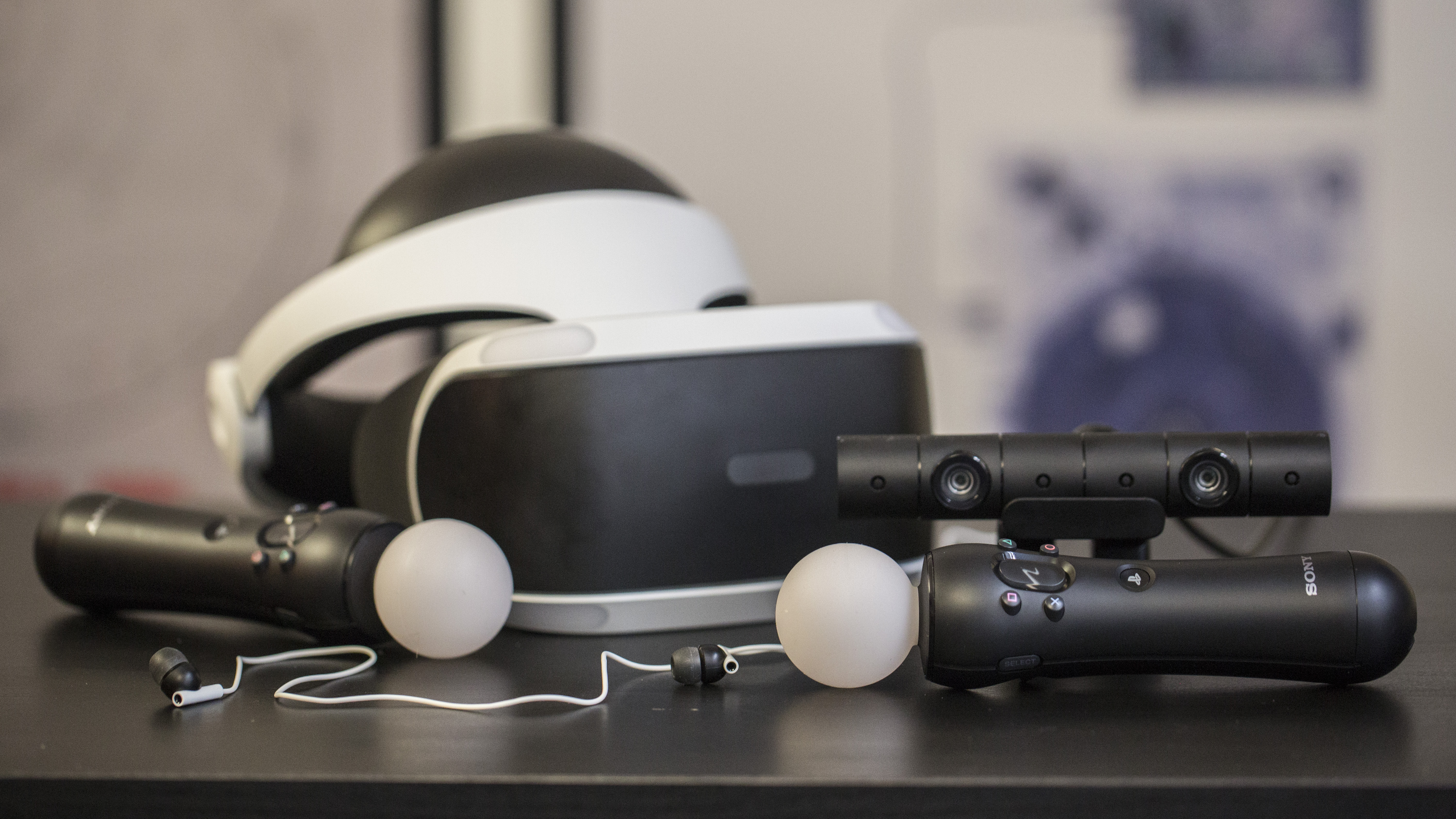
At launch, the PlayStation VR headset had a slightly confusing sales set up. With the package re-using existing PlayStation peripherals such as the Move controllers and Camera, the PSVR headset itself was sold separately in some instances, despite the other components being vital parts of the set-up.
If you didn't already own the PlayStation Camera or Move Motion Controllers, the Launch Day bundle was the better bet, but more than a year on and the bundles – and messaging around exactly what components you'll need – are much better.
As of March 29, you can find PlayStation VR DOOM VFR bundle for $299.99 in the US, which includes the headset,camera, and a DOOM VFR Blu-ray disc. There's also a Skyrim VR bundle for $349.99. Both of these prices are $100 less than their original listing price.
In the UK, meanwhile, a starter pack costs £259, down from £349. In Australia, the same pack is priced AU$549.
Besides the PlayStation VR unit itself and the PlayStation Camera, all you'll need is a PS4 (either the Slim version, the three-year-old original or the ultra-powerful PS4 Pro will do), a PS4 DualShock 4 controller and a 6-foot-by-10-foot play space that's well lit, but not too bright.
Setting up the unit can be done in a matter of minutes and the provided instructions offer a clear visual guide to get you up and running.
How does PlayStation VR work?
Like other virtual reality headsets on the market, PlayStation VR has the arduous task of completely immersing you in a video game by producing two images simultaneously and then sending them to a headset a few feet away. But unlike the competition who require expensive graphics cards to get the job done, PS VR can do it using only the PlayStation 4's built-in GPU.
It achieves this by using the PlayStation Camera to track nine different points of light on the headset and the lights on either the Move controllers, or on the DualShock 4, depending on which game you're playing.
It's surprisingly accurate given the fact that it's only using a single camera to track what's happening ... but it's not foolproof by any stretch of the imagination. We'll cover performance in detail in a minute, but be prepared for the camera to lose track of the controllers. A lot.
But the real bummer here is that because Sony only uses one camera instead of two, it's harder for PlayStation VR to track you if you get up and walk around than it is for a system like the HTC Vive which can offer true room-scale VR. That said, it still can support you if you decide to get up and wander around, but don't expect to take more than a few steps in any direction without a warning from the system that you're straying too far away.
To that end, most PlayStation VR games can recommend that you stay in one of two positions, either sitting down or standing up and stationary. If you're prone to motion sickness, sitting down might be a bit more comfortable, however, certain games are definitely better played on your feet.
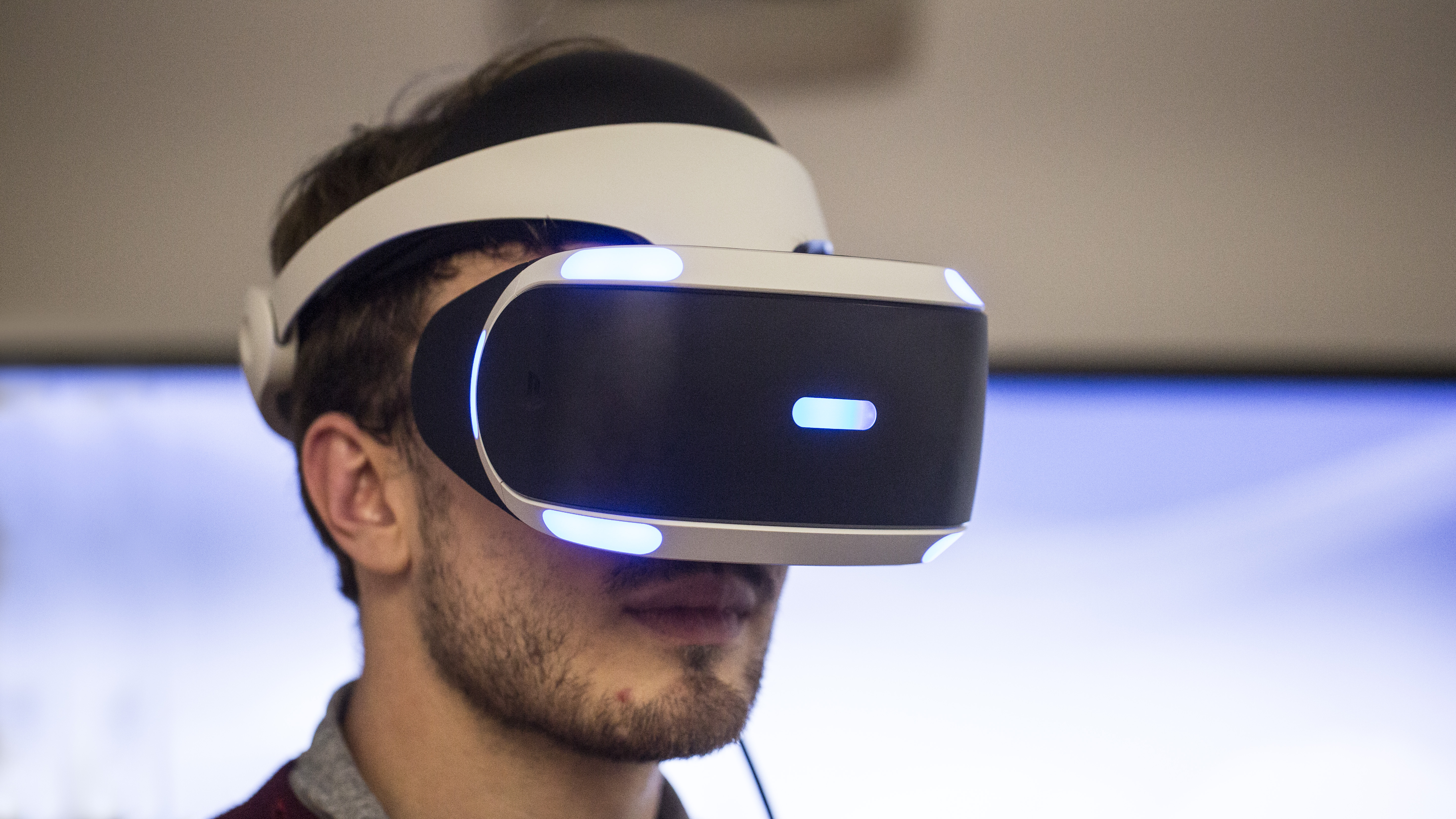
Depending on where and how you angle your camera, switching between the two might not be so easy, so it's best to find an angle that covers the majority of the room in case you want to switch from one to the other without having to get up, move the camera and recalibrate.
But let's back up. Up until now, the words "VR" and "virtual reality" have been thrown around a lot without much explanation.
VR has existed in one form or another for decades, but the modern version of the technology is more immersive and less nausea-inducing than it's ever been. In more or less words, virtual reality is just that – a virtual world that gives you the experience of being somewhere else in a different time, at a different place, sometimes as far as an alien world, all without ever leaving your home.
And yes, it's just as cool as it sounds.
If you want to be specific about it, PlayStation VR can handle 1080p games on its 920 x RGB x 1080 OLED display at either 90Hz (meaning that the image refreshes itself 90 times per second) or at 120Hz depending on the VR game or application.
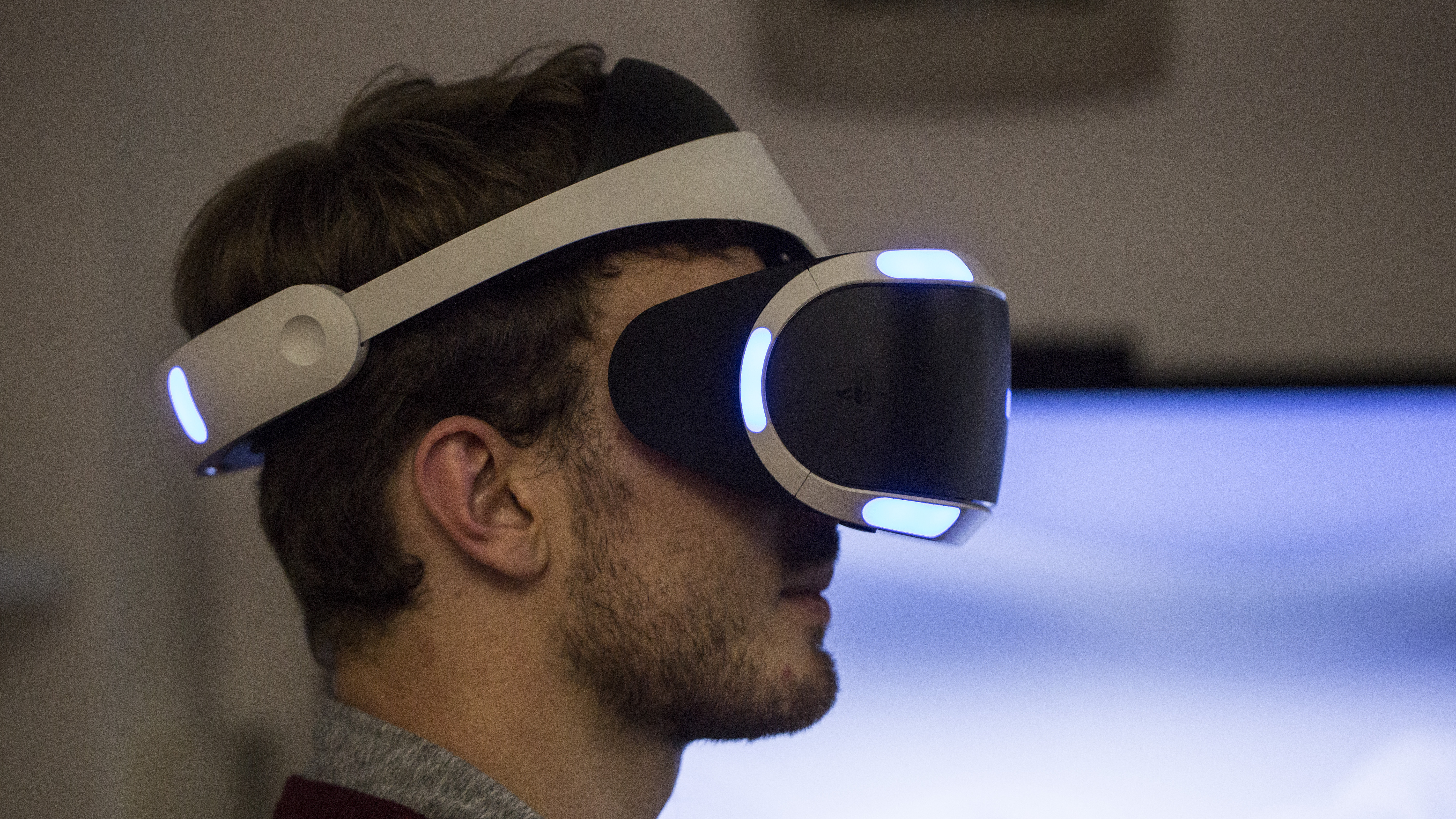
And for those concerned about latency, Sony says that PlayStation VR's response rate is locked in at around 18ms – which is about 0.002 seconds faster than the highest acceptable latency before you would notice the lag in VR.
Those numbers are great, but they're matched by both the HTC Vive and Oculus Rift. The one advantage Sony has that neither Oculus nor HTC can claim is that it's actually a world-class game publisher. While the other two have been trying to create connections with developers over the past few years, Sony already has them.
As a result, the best PlayStation VR games list is being constantly updated with excellent fresh experiences, with plenty more set to come across the next year. From shooters to puzzlers, platformers to narrative adventures, there's variety and depth to PSVR's growing gaming catalogue.
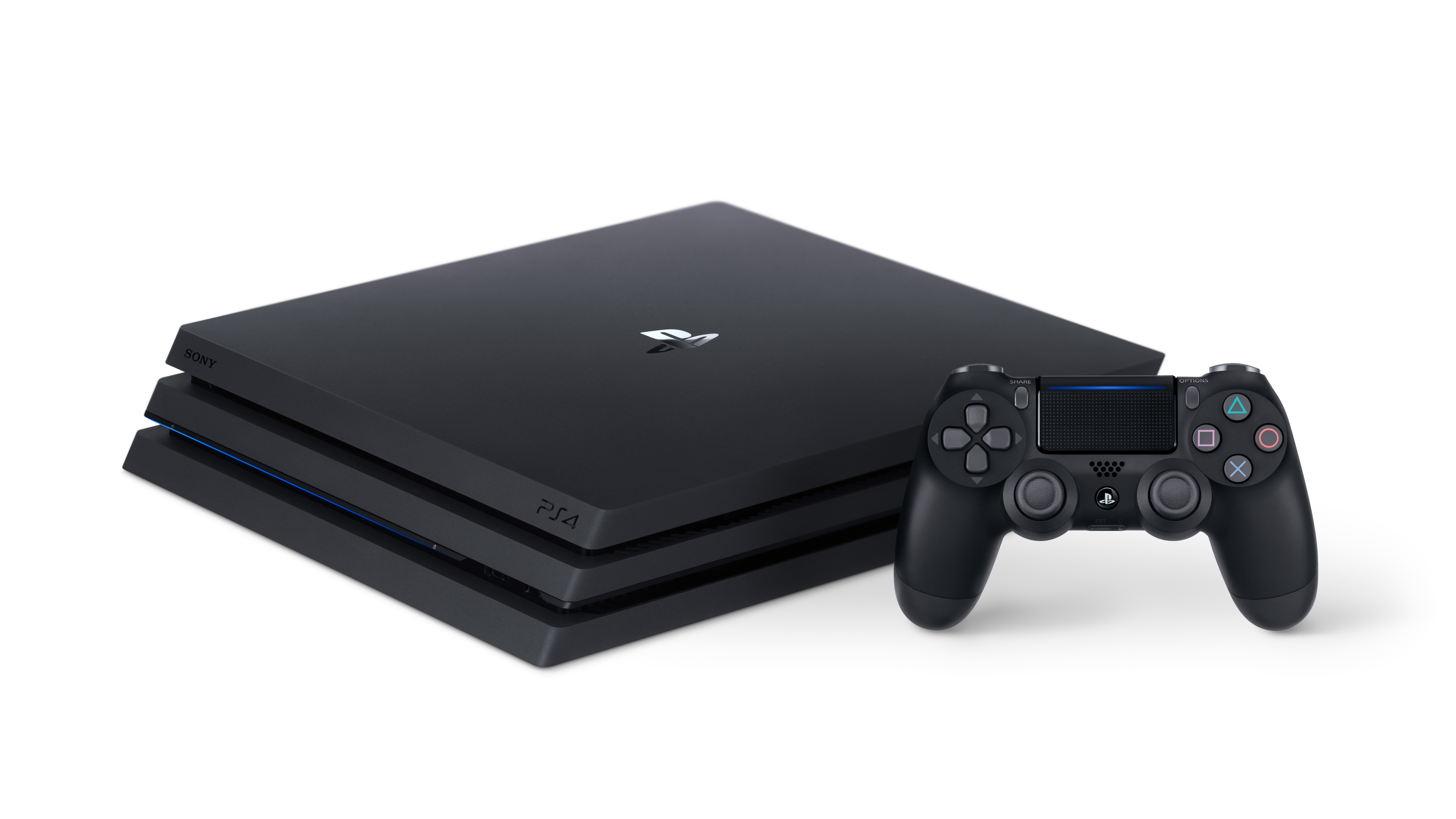
PlayStation VR on PS4 Pro
There's also another piece of hardware to consider when looking at buying a PlayStation VR, and that's Sony's brand-new, ultra-powered PS4 Pro.
With additional processing power, the PS4 Pro is capable of creating an even more immersive virtual reality experience for the games that support it.
The improvements PS4 Pro promises can take many forms – from more detailed textures to better draw distances, and even a small reduction in graininess. The advantages differ from game-to-game, and PS4 Pro is currently setup to only support games where the developer has enabled "Pro Mode", a hardware boosting technology that tells the PS4 to use extra processing power.
While writing the PS4 Pro review, we got the chance to try the upgraded hardware with the PlayStation VR and the results were noticeable, if a bit underwhelming in reality.
There's definitely a distinct difference between PS4 and PS4 Pro versions of VR games, however, it's probably not one that can be spotted by the unwitting non-techie – it's something that you can only spot if you're paying close attention to how certain textures look in-game or how objects look in the distance. Lag felt less prevalent on the Pro system though, in all fairness, it wasn't something we felt was a major problem while using the standard issue console.
Whether the minor improvements are worth paying extra for the more powerful hardware is ultimately a decision we'll leave up to you, however it's our opinion that you can get by with a standard PS4 just fine.
To read about PlayStation VR's games, performance and design in more detail, head on over to the next page.
PlayStation VR isn't a wild reimagining of the VR headset, but it's one of the most attractive efforts that we've seen so far.
The head-mounted display (HMD) screams minimalism with a tag team of black and white matte plastic touches. Its final iteration is interspersed with seven front-facing blue lights that the PlayStation Camera picks up to track your location and head movement. For games that require you to turn around, Sony stuck two more blue lights on the back of the strip bringing the total number of trackable lights to nine.
All said, it's a pretty elegant and accurate head-tracking solution.
PlayStation VR looks good and, thankfully, also yields comfort, which is a crucial box that not enough VR headsets can tick. Sony went for a "halo" shape for Playstation VR with a single white matte strap that wraps around your head seamlessly, coming together in the back, and can be adjusted to your liking. The inside of the strap has a thick cushion with a rubber finish that holds your head gently in place. Once the headset is on, you can adjust the visor forwards and backwards to help bring items on the screen in focus.
The PSVR's secret to comfort is that it hangs all of its weight at the top of your dome, putting less pressure on the bridge of the nose and the forehead. Where other headsets start to feel heavy after an hour or so of use, I felt that I could wear Sony's for hours on end without getting that all-too-familiar neck fatigue.
To seal out the light, Sony has installed a rubber flap that encircles the visor. While they're moderately effective at blocking out the incoming light on your left and right, the way the headset in constructed leaves a massive gap in between your nose and the headset, which allows light into the screen and can be pretty distracting when you're trying to lose yourself in the virtual world.
Although the headset technically fits over a pair of glasses, this tends to worsen the light-leakage problem.
It's annoying, but not necessarily a deal breaker.
Inside the headset is a 5.7-inch OLED screen with a 1920 x RGB x 1080 resolution. The PlayStation VR offers a 100-degree field of view, a 120Hz refresh rate and latency less than 18ms, which means that it's less nausea-inducing than previous versions of the headset that had a higher latency and a slower refresh rate.
The PSVR's control scheme utilizes a combination of head movements made with the HMD, along with the PlayStation Move controllers and DualShock 4 controller that you may or may not be familiar with. The Move controllers had their first run when they were introduced alongside a few Wii-like titles on the PlayStation 3, and while they worked well there, it wasn't until PSVR that we saw a true purpose for them.
The wands felt a little half-baked on the PS3, or at least as if they existed solely to have a hand in motion-controlled gaming, but they feel right at home with PSVR. Other games with more complex control schemes – like a game called RIGS that we'll discuss in a minute – will use the DualShock 4 wireless controller that comes shipped with the PS4.
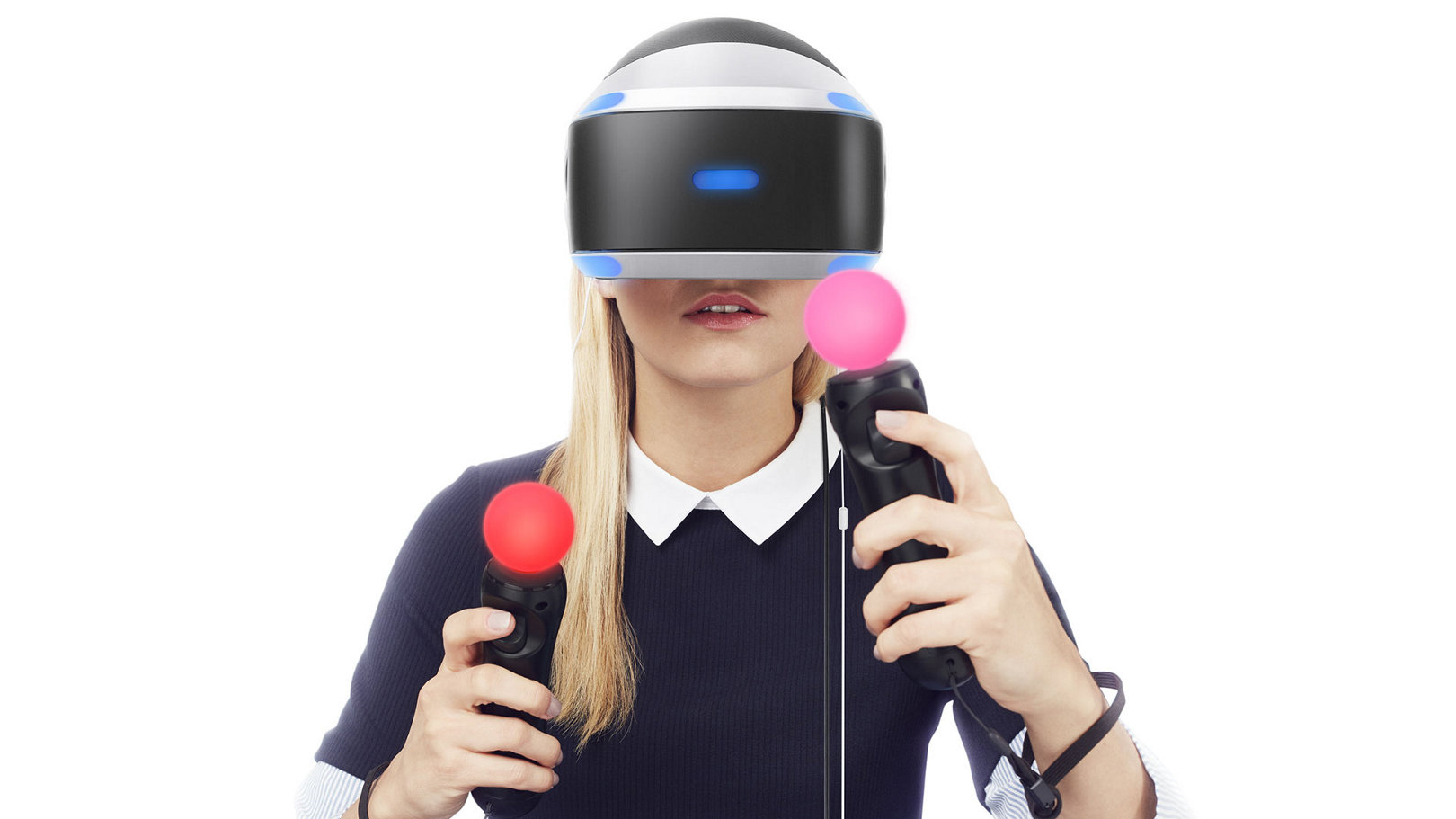
If it hasn't already been made explicitly clear up to now, I'll break the most disheartening news to you now: the PSVR is not a wireless headset. While the Samsung Gear VR and Google Cardboard can get everything they need from your mobile device, PlayStation VR will need to be tethered to your system at all times.
The cord, which runs from the headset to PlayStation VR's processing unit and then to the PS4 itself, has an in-line control unit close to the headset that allows you to turn the headset on and off or raise and lower the volume. This is also where you'll find a headphone jack that accepts anything from a pair of high-end Sennheisers to cheap earbuds.
Sony ships every headset with pair of tiny white earbuds, but these are effectively the worst options for experiencing VR – they're hollow-sounding, uncomfortable and prone to falling out. For my week with the PlayStation VR I chose to use a pair of Creative Sound Blaster H5s due to their padding and excellent sound quality, but really any decent pair of wired over-ear headphones will do.
The final piece of the design puzzle is the Processor Unit briefly mentioned above. Sony has made it clear on numerous occasions (sometimes via email, cough) that this unit is not responsible in any way for additional graphics processing and it's worth echoing that point here.
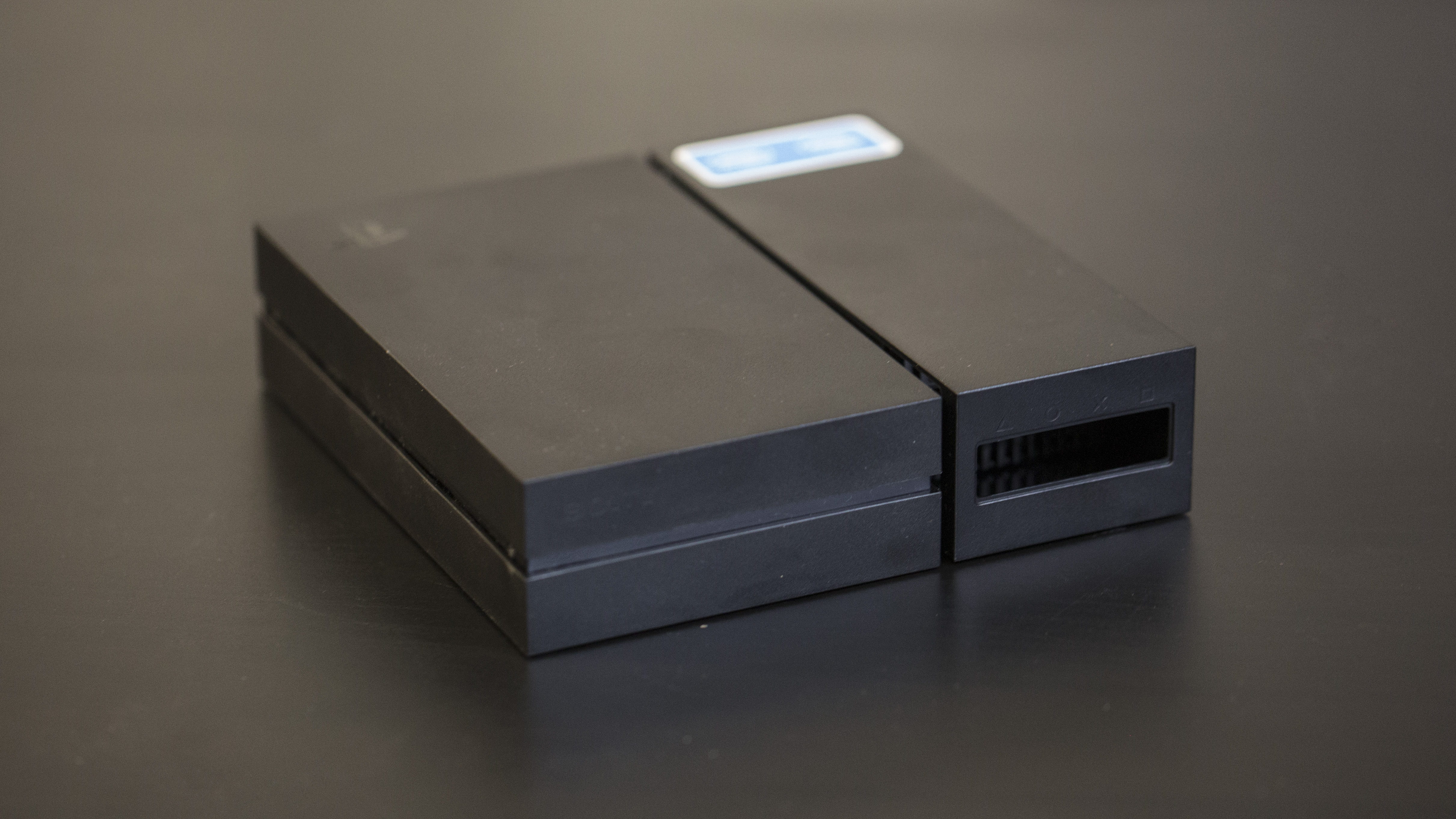
Measuring in at 5.6 x 1.4 x 5.6 inches (W × H × L), the unit's sole responsibility is to assist the PS4 with 3D audio processing, HDMI cable management, Cinematic Mode, and the Social Screen TV output. We'll cover what those last two modes are in a minute, but I felt this was as good a time as any to point out the black box's existence in case you have any objections to another small box on your media shelf.
Performance and content library
If I had to summarize the PlayStation VR's performance in a single word, I'd opt to use "surprising".
VR competitors like Oculus and HTC have set the bar quite high for how a good VR experience should look and feel – which, considering these two options require a seriously powerful gaming rig that costs two or three times as much as PSVR, makes sense.
With HTC Vive and Oculus Rift, I knew what I was getting. I was running the headsets off my own top-of-the-line PC, that had the power to play most games on their maximum settings. With PlayStation VR, however, I was a little less sure everything would work out.
But, as it turns out, the PS4 is more than capable of displaying two surprisingly crisp images, that may not offer the most amazing, mind-blowing fidelity, but are more than adequate for the vast majority of games. (Of the titles I tried, all of them worked as advertised, but I noticed that many of them stuck with simple graphics rather than going for the real-life look.)
Similarly head-tracking was nearly as precise on PSVR as it was on either the Oculus Rift or HTC Vive, with the only minor caveat being that the system would lose the Touch controllers from time-to-time, merely due the fact that the tracking space is so much more confined.
Despite having a smaller field of view than the Oculus Rift by about 10 degrees (110 vs 100), the PlayStation VR surprisingly rarely made me feel nauseated, due in no small part to the 18ms latency that made experiences mostly smooth without discernable lag or judder. I remember a time where its field of view was a major sticking point for me, however, at worse the final unit occasionally feels like viewing the world through a pair of goggles.
As for the games themselves, we've so far been impressed with what PlayStation VR provides. Batman: Arkham VR, Battlezone, Star Wars: X-Wing VR and Job Simulator are excellent bite-sized experiences. Meanwhile Resident Evil VII is playable in its entirety in virtual reality, which is probably one of the longest virtual reality experiences to date.
The pace of releases is showing no sign of slowing any time soon, as a recent showcase proved. There's a lot to look forward to.
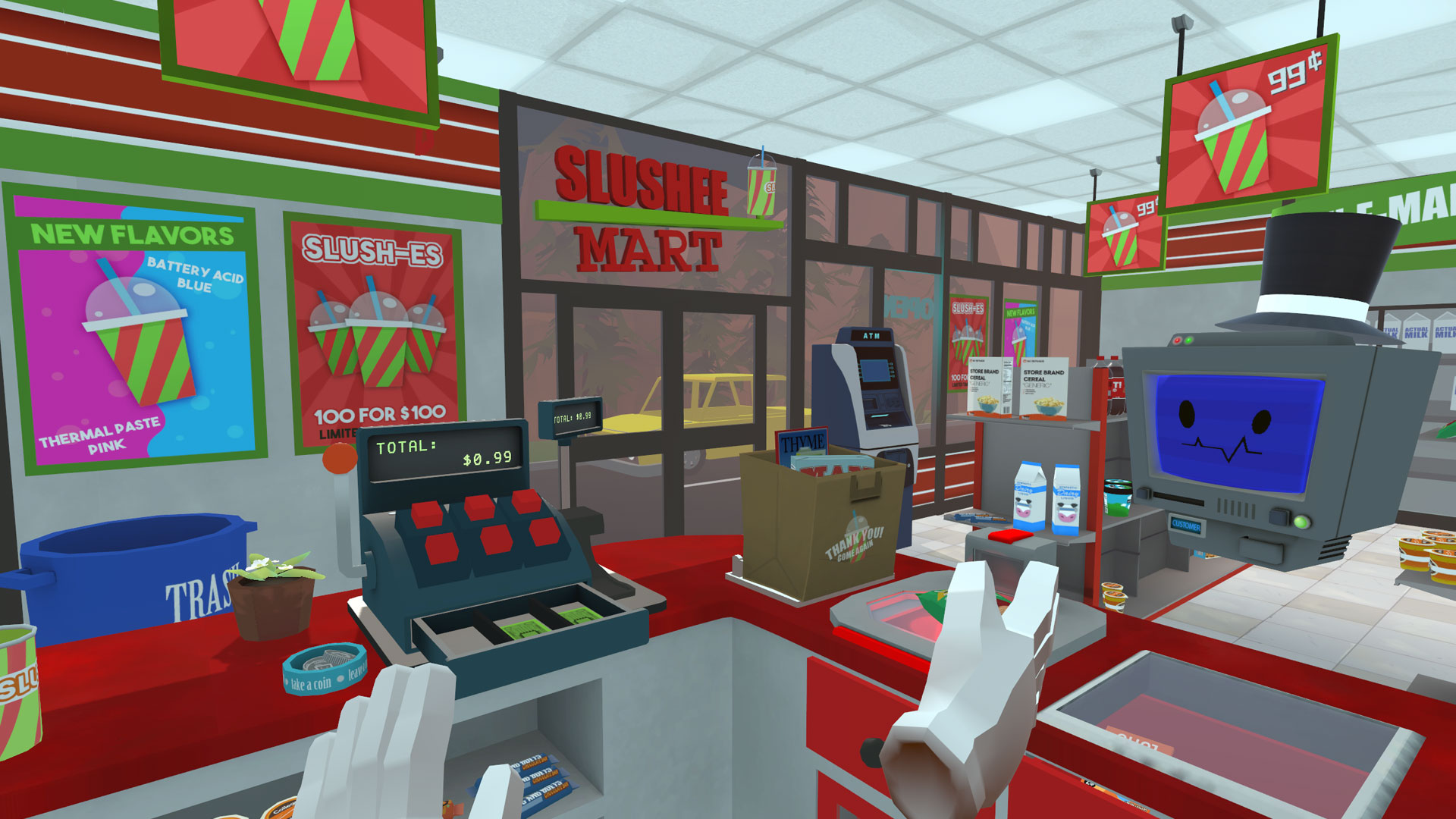
Experiences varied in levity from casual, playroom escapades to hyper-intense combat and even a horror game for added measure. The system and its specs lend themselves to more light-hearted fare rather than the fast-paced, high-intensity ones, and while the latter are passable they're prone to making you feel more nauseated than impressed (RIGS, I'm looking in your direction).
Thankfully, VR isn't the solitary experience TVs and movies make it out to be. Friends and family can watch you as you game thanks to Social Screen TV – which displays a 2D version of what players are seeing in 3D on your TV – while some titles, like Battlezone, actually support online multiplayer.
Another neat feature is Cinematic Mode, which allows you to watch 2D content inside the VR helmet. Cinematic mode doesn't transform 2D content into 3D content, but it does allow you watch your favorite shows from Netflix and YouTube – or even play 2D PS4 titles – on a super-sized virtual screen.
Speaking of movies and TV shows, there are currently a number of short VR cinematic experiences on the PlayStation Store that are worth checking out. They're not Oculus Studios quality, but I did find myself laughing aloud when I watched Invasion! and had a tear in my eye by the end of Allumette.
A recent update also allows the headset to view not only 360 videos on YouTube, but also to watch any 3D Blu-ray discs you have lying around - so you shouldn't be lacking for video content.
However these experiences, both games and movies, are never what I'd consider realistic – trust me, you'll never forget you're in virtual reality if that's your concern. Some character models have jagged edges to them and even the best animators can only do so much with the technology.
At this stage at least it's easy to tell the virtual world from the real one and, for some people, that might make PlayStation VR come off as more of a novelty like Nintendo's Wii rather than the ground-breaking innovation that I see it as.
I mention it in every VR review I write, so I apologize if you've read this before, but it's important to point out that VR can make even a seasoned gamer weak in the knees if you play it for too long.
Sony recommends taking breaks every 15 minutes or so and stopping immediately if you start to feel dizzy. I'll add onto that by saying that you should slowly acclimate yourself to virtual reality rather than jump headfirst into it. Start by playing a game for a few minutes, ideally using the Move motion controllers while seated. As you start to feel more comfortable you can increase the amount of time you spend in the virtual world without coming up for air, and choose to stand to get the full immersive experience.
I'll also admit that the first time I tried VR, I felt very sick, and only after using virtual reality headset over multiple occasions could I finally overcome this feeling and start to actually enjoy VR.
My body, like yours, isn't used to feeling disconnected to the visual stimuli it's receiving. Even if you game for hours and hours per day, you still are sitting in the real world, periodically removing your gaze from the television to look at your cellphone or interact with another human being. In virtual reality, the only things you see are the screen and the objects on it, yet you can't physically interact with them. This leads to the feeling of disconnection and resulting nausea.
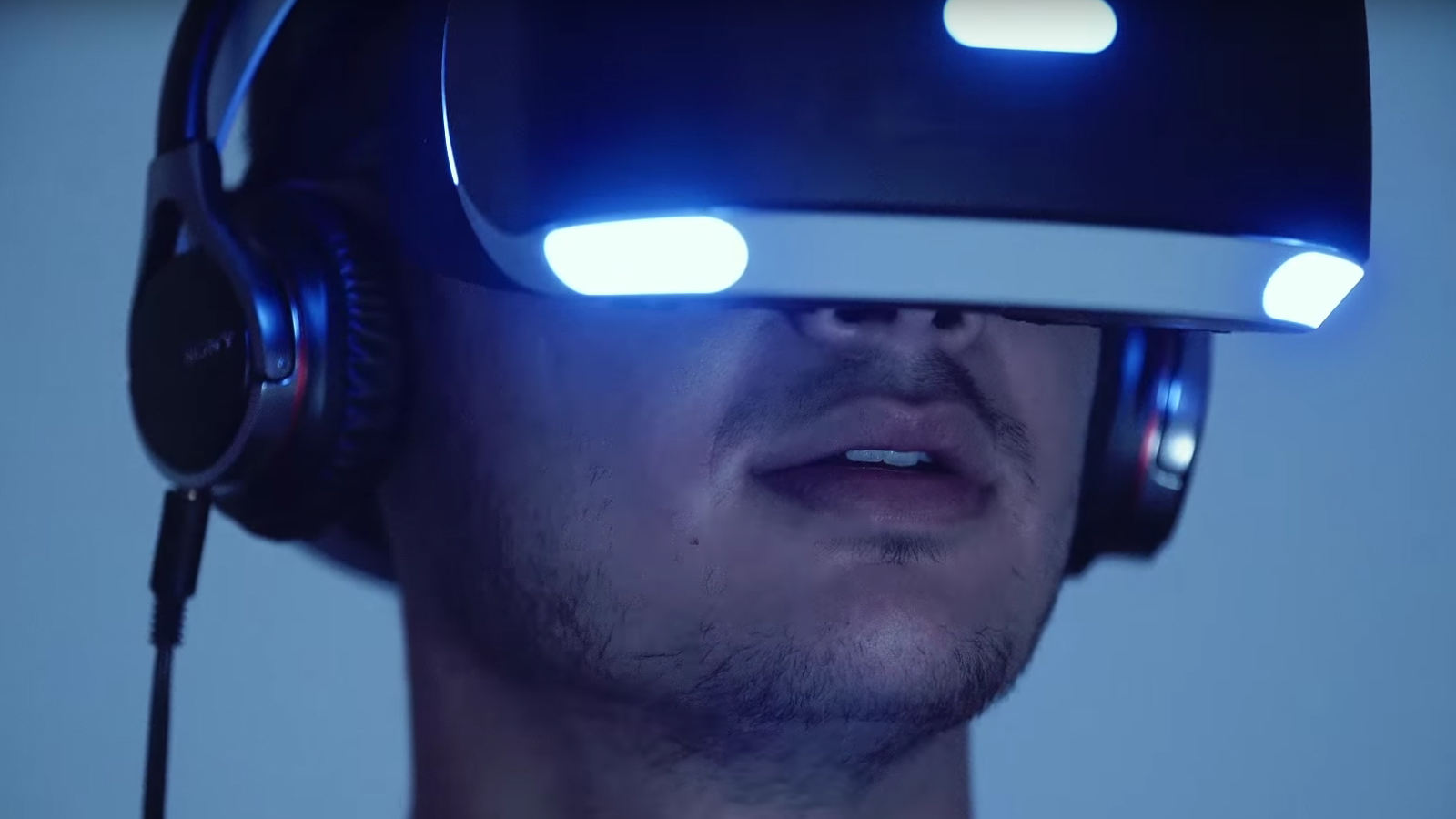
The other interesting symptom I had after extended use was a pretty awful headache. It might've been due to the lack of sleep I went through while writing this review (you're welcome by the way) or the fact that I put myself on a strict media diet of eight hours of VR a day for a week straight, but most nights I went to bed with puffed eyes and throbbing sensation right above my temple.
There are others who I've spoken to who have felt similarly without testing it for hours on end and with a better sleep regiment, and some friends who felt just fine playing longer on less sleep. This is a definite "your miles may vary" situation, but I just thought it was worth mentioning in case you get your own unit and feel similarly.
I'll end this section on a high-note: PlayStation VR is one of the better VR systems I've had the pleasure of using. Because it has motion controllers and offers enough playspace for you to stand up when you get tired of sitting, it's actually less likely to make you feel nauseated and achy than, say, Oculus Rift or Samsung Gear VR might.
PlayStation VR's future
Let me say flat-out: I can't predict the future, nor can I claim that I'm privy to Sony's plans for the headset going forward. But, one option I see for PlayStation VR is that it becomes a blockbuster accessory that becomes essential to the platform moving forward. Compared to the other headsets, it's selling relatively well, and developers will feel that there's financial gains to be made creating content for the nascent medium and supporting it in its first few years of life.
The signs so far are good – here's hoping it doesn't end up on the same dusty shelf as the PlayStation Vita or Nintendo Wii.
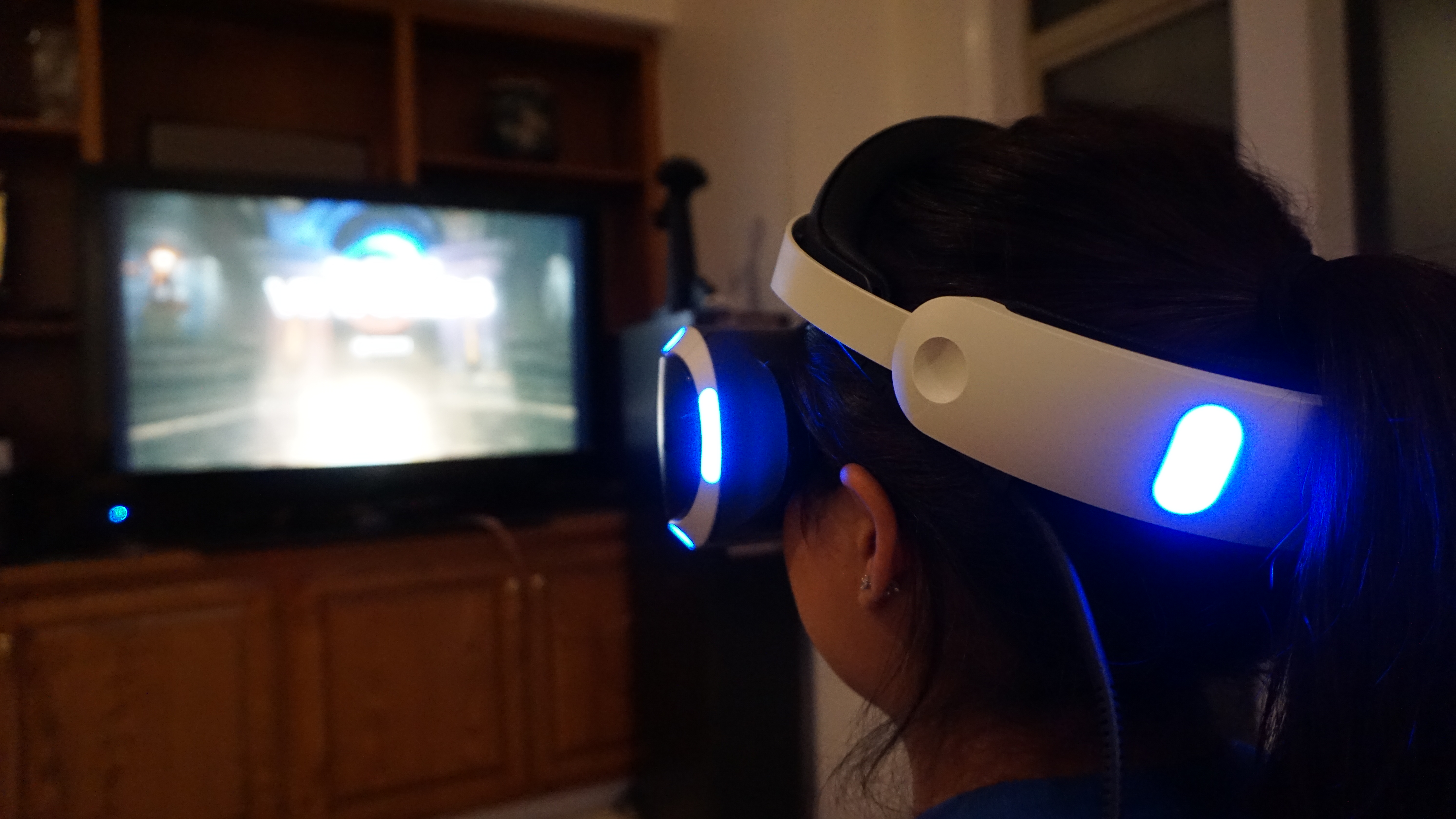
From everything I've seen and heard so far, both at tradeshows and while talking to developers, there's a lot of excitement around virtual reality and PlayStation VR specifically. That lends itself to the idea that PSVR will continue to be well-supported both by first-party developers and third party publishers actively trying to make the platform succeed. I only mention the latter because it's not a completely uncommon scenario – we shell out for technology that we think could take off, only to be disappointed when it can't reach critical mass and developers abandon it. (See: Microsoft's Kinect, 3D TVs and Betamax players.)
I guess what I'm trying to say is that there's probably a lot of potential here, Sony would hardly waste millions of dollars in R&D if there wasn't, and once we learn how to tap into it better by becoming native VR users, it's only going to get better. But, if you're scared to dive in head first, no one would shame you for waiting a few months to make sure developers are still on board before putting down your cash.
PlayStation VR is inspiring. As a whole it's incredible, even if there are some hang ups here and there. After trying it for yourself you'll want to experience something like BioShock Infinite or GTA V in VR, and the first few demos and games will give you a little sneak peek of what every game could be like five years from now.
PlayStation VR is an affordable introduction to quality VR – "quality" being the operative word there. Many of the experiences aren't as crisp or as immersive as the ones found on Oculus and Vive but, for a system that uses a PS4 instead of an expensive gaming rig, I'm not complaining.

With the potential for prior ownership of some necessary components, Sony is probably making the right move by reducing the cost for those who already own the Move and Camera peripherals, but for those who show up expecting to pay $400 / €399 / £349 / AUD$549 might not appreciate the fine print of potential extra expenses outside of the bundles.
The other irksome aspect is the hole near the bridge of the unit that lets light into the screen. You might not have ever gotten completely lost in the virtual world even if it had been an airtight seal, but there's no quicker way to feel less immersed than looking down and seeing your living room floor.
But these are minor faux pas and aren't worth getting too upset about. PlayStation VR is so far a surprisingly good product, easily in the top three headsets made thus far and probably squeezes its way in the top two when you factor in price.
Whether you decide on the PlayStation VR over Oculus or HTC should likely come down to the following – your budget, your platform of preference and the amount of real-world living space you're willing to sacrifice to play semi-realistic video games in virtual reality.
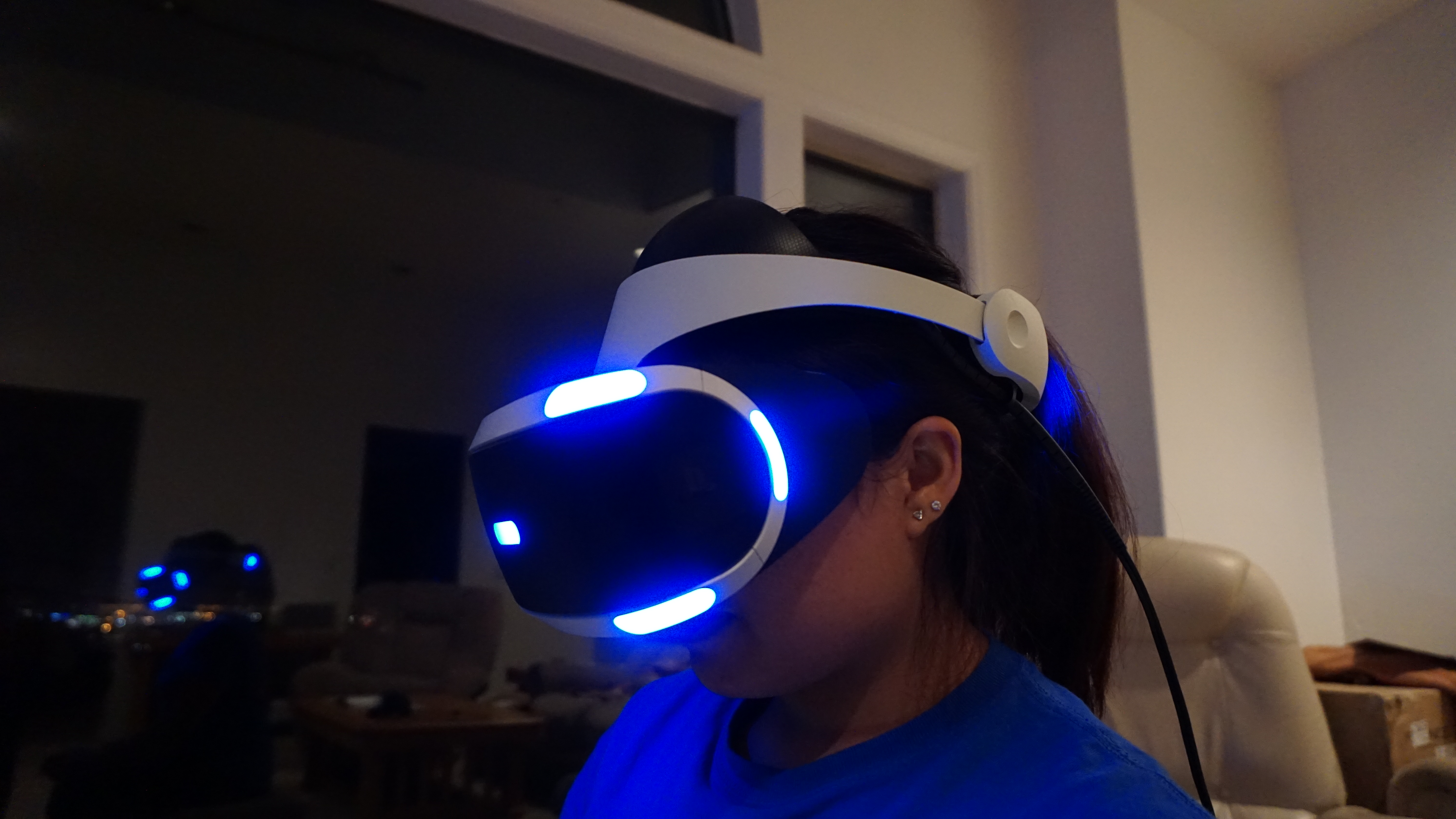
If you already own a PS4, PSVR is the most logical and affordable option. It offers hand tracking through the Move motion controllers, a decent library of games right out of the gate and an unbeatable price tag.
That being said, if you have a lot of extra room and are looking for an even more immersive experience where money's no object, I recommend forgoing PSVR for an HTC Vive, if only because of the room-scale immersion and slightly higher-fidelity graphics on a high-end PC.
Lastly, if you've got the PC already but are limited on space and would have to buy both a PS4 and PlayStation VR in order to embark on this VR venture, I'd recommend choosing Oculus.
We liked
Despite their failings from time to time, I really appreciated that Sony found a use for the PlayStation Move motion controllers. They feel like a natural fit for VR.
The headset itself is also particularly sleek and comfortable. The white and black exterior looks like something out of Ready Player One or Star Trek, and can be worn for hours without the all-too-familiar neck pain that I've felt while using other VR hardware.
Finally, I think the games on PlayStation VR are surprisingly fun. Batman: Arkham VR is a fantastic visual showcase for the hardware, while Wayward Sky offered an emotional experience wrapped in the guise of an indie launch title.
We disliked
PlayStation VR is a tethered experience that encourages you to sit down rather than stand up. While the HTC Vive unlocks a massive maximum tracking area of 15 x 15 feet, Sony confines you to a 6-foot-by-10-foot space.
That wouldn't be so terrible if the Sony Camera did a better job picking up where, exactly, the Move motion controllers are. However, as it stands, the camera seems to constantly lose sight of the glowing gamepads even when you're well within the playspace.
Between the spotty motion controller tracking and small gap along the bottom edge of the facemask that lets light in, it's hard to feel fully immersed in the dozen or so games Sony and other developers have spent years crafting, and for a VR headset that's a major problem.
Final verdict
For one minute, forget the finer details and focus on the bigger picture. In three short years, Sony took PlayStation VR from the ground floor of development to an industry-leading product.
PlayStation VR is a wholly new platform that embodies so much of what made the original PlayStation so great – it's innovative, smart and easy-to-use. It's affordable and already has a growing catalogue of must-play titles. It's a far cry from a complete package – and in some ways fails to live up to the high bar set by the HTC Vive – but, for $100 less than an Oculus Rift, I'm not complaining.
0 comments:
Post a Comment